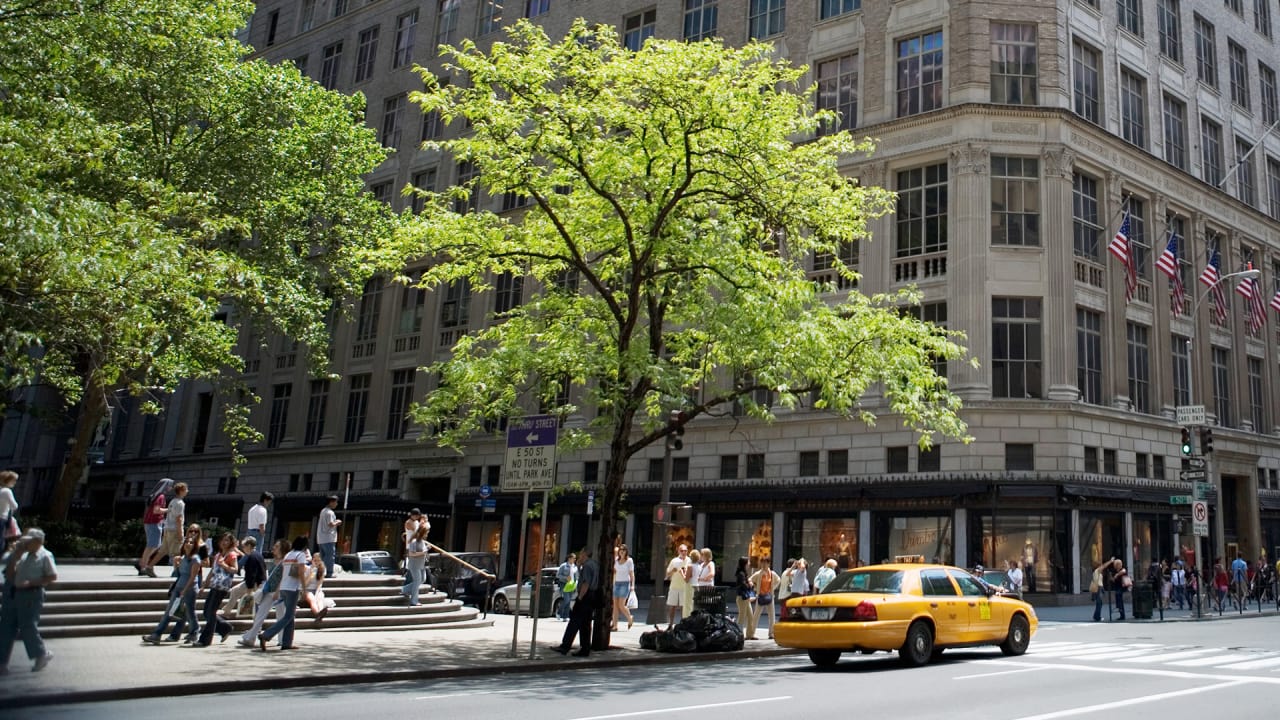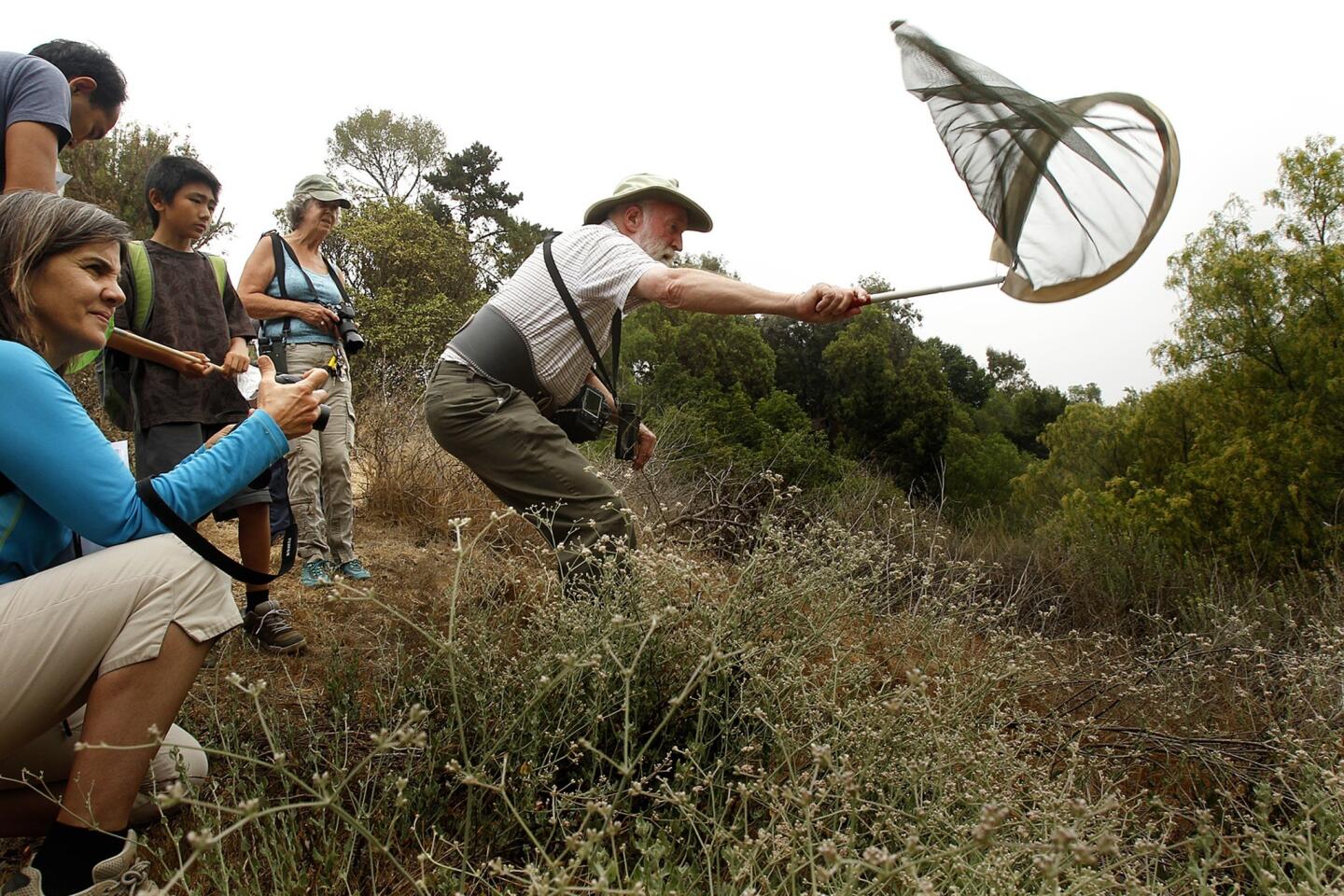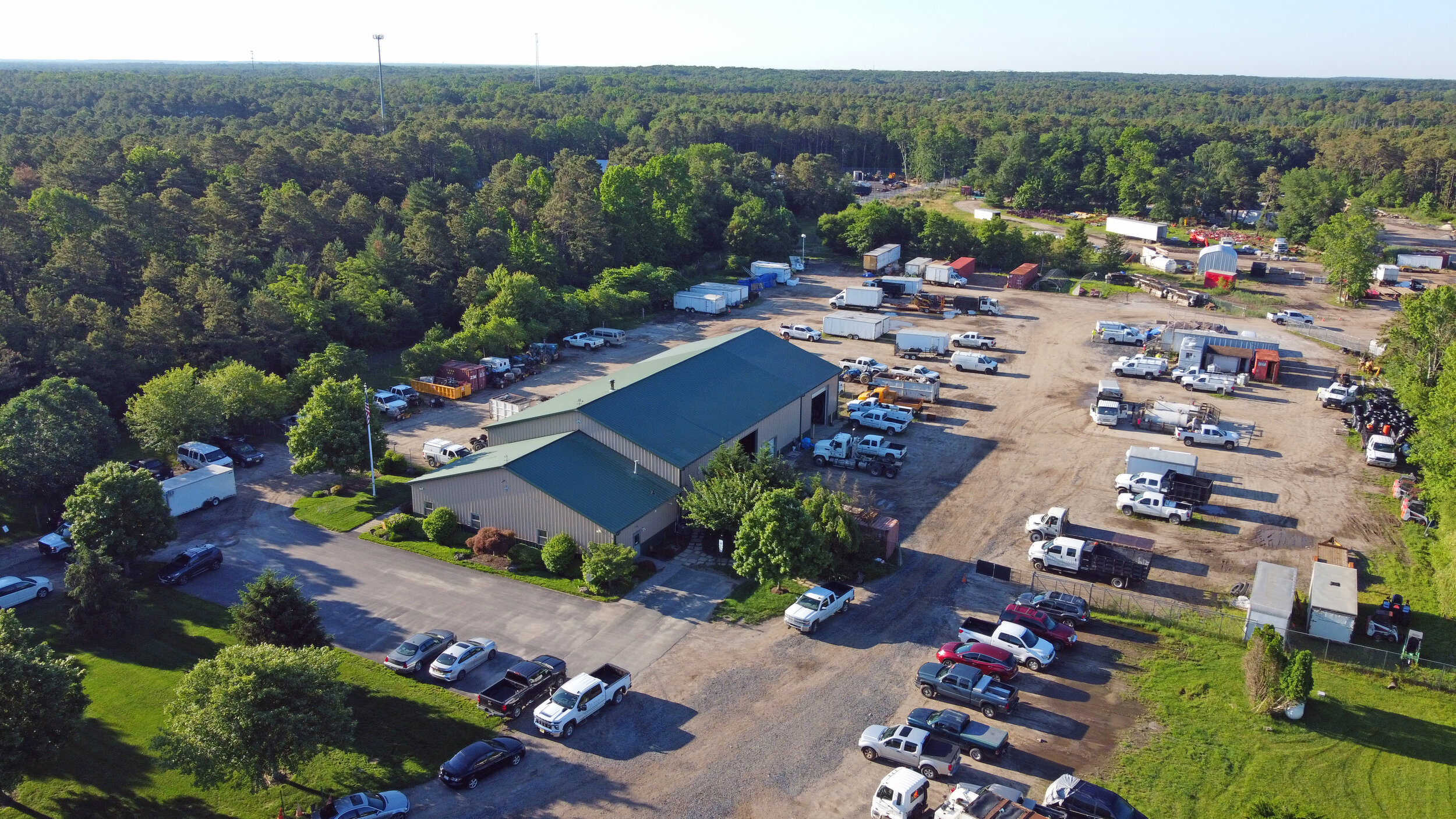Home>Gardening News and Trends>Latest News>Who Is Responsible For City Trees


Latest News
Who Is Responsible For City Trees
Modified: January 22, 2024
Stay updated with the latest news on city trees and find out who is responsible for their maintenance and care.
(Many of the links in this article redirect to a specific reviewed product. Your purchase of these products through affiliate links helps to generate commission for Chicagolandgardening.com, at no extra cost. Learn more)
Table of Contents
Introduction
Trees play a vital role in creating a healthy and sustainable environment, and nowhere is this more evident than in cities. The presence of trees in urban areas not only enhances the aesthetic appeal but also provides numerous benefits, including improved air quality, reduced urban heat island effect, and enhanced mental well-being. However, the responsibility for the care and maintenance of city trees falls on multiple entities, each with their own roles and responsibilities.
In this article, we will delve into the different parties involved in the management of city trees and explore their respective roles. Understanding who is responsible for city trees is crucial in ensuring their proper care and preservation for the benefit of both current and future generations.
Importance of Trees in Cities
Before discussing the responsibilities of various entities, it is important to acknowledge the significance of trees in urban settings. Trees provide a range of ecological, environmental, and socio-economic benefits that contribute to the overall well-being and quality of life in cities. They improve air quality by absorbing pollutants and releasing oxygen, reduce noise pollution, act as natural cooling systems by providing shade, and mitigate the impacts of climate change by sequestering carbon dioxide.
Roles and Responsibilities of Local Government
Local government bodies, such as city councils or municipalities, play a crucial role in the management of city trees. They are responsible for developing and implementing policies, regulations, and guidelines that govern the planting, maintenance, and removal of trees within city limits. Local governments also allocate budgets and resources for tree care, conduct tree inventories, and monitor compliance with tree preservation ordinances.
Role of Public Works Department
Within the local government structure, the public works department often takes on the responsibility of overseeing the maintenance and care of city trees. This includes tasks such as pruning, planting, and removal of trees, as well as regular inspections for disease and structural issues. The public works department also responds to citizen complaints, addresses safety concerns, and coordinates with other departments and external organizations for larger tree-related projects.
Importance of Trees in Cities
Trees are not just a decorative element in urban landscapes; they play a vital role in creating a healthy and sustainable environment. The presence of trees in cities provides a range of benefits that contribute to the overall well-being and quality of life for residents.
One of the primary advantages of urban trees is their ability to improve air quality. Trees act as natural air filters, absorbing harmful pollutants such as carbon dioxide, nitrogen oxides, and particulate matter. Through the process of photosynthesis, trees release oxygen into the atmosphere, thereby reducing the concentration of harmful gases and improving the overall air quality in cities. This is especially important in urban areas, where higher levels of pollution are often prevalent.
In addition to their air purification capabilities, trees in cities assist in reducing the urban heat island effect. Asphalt and concrete surfaces in densely populated areas absorb and retain heat, resulting in higher temperatures. Trees provide natural shade, lowering surrounding temperatures and reducing the need for air conditioning. By mitigating the urban heat island effect, trees help to create a more comfortable and livable urban environment.
Furthermore, trees have a positive impact on the mental well-being of city dwellers. Numerous studies have shown that exposure to nature, including trees, has a calming effect and can reduce stress levels. The presence of green spaces and tree-lined streets in urban areas provides a connection to nature, which is essential for psychological health. Trees also contribute to the overall aesthetics of the cityscape, creating a visually appealing environment that enhances the quality of life for residents and visitors.
From an environmental perspective, urban trees play a crucial role in mitigating the impacts of climate change. As they grow, trees sequester and store carbon dioxide, a greenhouse gas that contributes to global warming. By absorbing carbon dioxide through photosynthesis, trees help to reduce the concentration of this greenhouse gas in the atmosphere. Planting and maintaining a diverse range of tree species in cities can significantly contribute to carbon sequestration and aid in the global efforts to combat climate change.
Lastly, trees contribute to the overall ecological balance in cities by providing habitats for birds, insects, and other wildlife. The presence of these natural habitats encourages biodiversity and supports the existence of diverse ecosystems within urban areas.
Considering the multitude of benefits that trees offer in cities, it is crucial to recognize their importance and take proactive measures to preserve and protect them.
Roles and Responsibilities of Local Government
In the management of city trees, local government bodies, such as city councils or municipalities, play a crucial role. They are responsible for developing and implementing policies, regulations, and guidelines that govern the planting, maintenance, and removal of trees within city limits.
One of the primary responsibilities of local government is to allocate budgets and resources for tree care. This includes funding for tree planting programs, regular maintenance activities such as pruning and watering, and emergency response in the event of storm damage or disease outbreaks. By investing in the care and maintenance of city trees, local governments ensure the longevity and sustainability of the urban forest.
In addition to budget allocation, local governments also conduct tree inventories to assess the health, species diversity, and distribution of trees within their jurisdiction. The data collected from these inventories helps inform future planning decisions and allows for effective management strategies to be implemented. It also allows local governments to monitor compliance with tree preservation ordinances and take appropriate action against individuals or organizations that violate these regulations.
Local governments actively engage with the community in matters related to city trees. They provide information and resources to educate the public about the importance of trees and promote citizen involvement in tree planting and care initiatives. By fostering a sense of responsibility and stewardship among residents, local governments encourage a collaborative approach to maintaining and protecting the urban forest.
Furthermore, local governments coordinate with various departments to ensure proper tree management. This includes collaborating with the public works department for routine maintenance activities, such as pruning and watering, and coordinating with the urban planning department to incorporate tree planting and preservation into development projects. By working in tandem with different departments, local governments ensure a holistic and integrated approach to tree management within the city.
Local governments also play an essential role in coordinating with external organizations and stakeholders. This includes partnerships with environmental organizations, non-profits, and community groups that focus on tree care and conservation. By working together, these collaborations can leverage expertise and resources to develop innovative programs and initiatives to enhance the city’s urban forest.
Overall, the role of local government in the management of city trees is crucial in ensuring the sustainability, health, and beauty of urban forests. Through effective policies, budget allocation, community engagement, and coordination with various departments and external organizations, local governments play a vital part in preserving and protecting the urban green spaces for the benefit of current and future generations.
Role of Public Works Department
Within the local government structure, the public works department often takes on the responsibility of overseeing the maintenance and care of city trees. This department plays a crucial role in ensuring the health, safety, and aesthetic appeal of the urban forest.
One of the primary responsibilities of the public works department is to conduct regular inspections of city trees. These inspections involve assessing the overall health and structural integrity of the trees, identifying any signs of disease or decay, and determining if any immediate action, such as pruning or removal, is necessary. By conducting timely inspections, the public works department can mitigate potential risks and address tree-related issues before they escalate.
In addition to inspections, the public works department is responsible for routine maintenance activities, such as pruning, watering, and fertilizing city trees. Proper pruning helps maintain the structural integrity of the trees, encourages healthy growth and development, and ensures public safety by removing any potential hazards, such as dead or overhanging branches.
The public works department also takes charge of tree planting initiatives within the city. This involves selecting appropriate tree species for the urban environment, identifying suitable locations for planting, and overseeing the actual planting process. By carefully considering factors such as soil quality, available space, and the desired benefits of the trees, the department ensures successful and sustainable tree growth.
Another important aspect of the public works department’s role is responding to citizen complaints and concerns related to city trees. Whether it is addressing a potential hazard, investigating damage caused by storms, or handling requests for tree removal or relocation, the department plays a key role in addressing the needs and priorities of the community. Prompt and effective resolution of these issues not only ensures public safety but also fosters a sense of trust and satisfaction among residents.
Collaboration is crucial in the effective management of city trees, and the public works department often works closely with other departments within the local government structure. This includes collaborating with the urban planning department to integrate tree planting and preservation into development projects and working with the parks and recreation department to maintain trees in public parks and green spaces. By coordinating efforts with other departments, the public works department ensures a unified and coordinated approach to tree management.
Overall, the public works department plays a critical role in the care, maintenance, and management of city trees. Through regular inspections, routine maintenance, tree planting initiatives, addressing citizen concerns, and collaborating with other departments, the department contributes to the overall health and well-being of the urban forest and the communities it serves.
Involvement of Urban Planning Departments
The role of urban planning departments is essential in the management and preservation of city trees. These departments play a vital role in ensuring the integration of trees and green spaces into the urban landscape, contributing to the overall sustainability and livability of cities.
One of the key responsibilities of urban planning departments is to incorporate tree planting and preservation into city development projects. This involves considering the location, species selection, and design aspects of trees when planning new infrastructure, streetscapes, and public spaces. By integrating trees into the urban fabric from the early stages of planning, urban planning departments can maximize the benefits of trees while minimizing potential conflicts with other infrastructure elements.
Urban planning departments also play a crucial role in developing and enforcing urban tree ordinances and regulations. These regulations set guidelines for tree preservation, removal, and planting on both public and private properties within the city. By establishing standards for tree canopy coverage, tree size and species diversity, and tree protection during construction, these ordinances ensure the long-term preservation and health of the urban forest.
In addition to developing regulations, urban planning departments conduct tree surveys and assessments to analyze the existing tree population and identify areas with low tree canopy coverage or inadequate green spaces. This information helps guide future planning decisions, identify areas for targeted tree planting initiatives, and ensure an equitable distribution of trees across different neighborhoods and communities.
Collaboration with other city departments is crucial in the involvement of urban planning departments. They work closely with the public works department to align tree management initiatives with other infrastructure projects, such as road development or sidewalk installations. By coordinating efforts, urban planning departments and public works departments can ensure that tree planting and maintenance activities are integrated seamlessly into the city’s overall development plans.
Beyond coordination with other departments, urban planning departments also engage with community stakeholders and residents to gather input and feedback on tree-related projects. They conduct public consultations, workshops, and design charrettes to involve the community in decision-making processes related to tree planting, tree protection, and the overall design of green spaces. By involving the public, urban planning departments can ensure that the urban forest aligns with the preferences and needs of the community it serves.
Overall, the involvement of urban planning departments is crucial in the management and preservation of city trees. By integrating trees into development projects, developing and enforcing regulations, conducting tree surveys, collaborating with other departments, and engaging with the community, urban planning departments contribute to the creation of sustainable, green, and livable cities.
Role of Environmental Organizations
Environmental organizations play an important role in the management and promotion of city trees. These organizations are dedicated to conserving and protecting the natural environment and work collaboratively with local governments, communities, and other stakeholders to ensure the health and sustainability of urban forests.
One of the key roles of environmental organizations is advocacy for tree protection and preservation. They actively engage in policy discussions and campaigns to raise awareness about the importance of urban trees and advocate for stronger tree preservation ordinances. By lobbying for increased tree canopy coverage, species diversity, and sustainable tree management practices, these organizations influence decision-making processes and ensure that the needs of the urban forest are considered.
Environmental organizations also contribute to the knowledge and research surrounding urban trees. They conduct studies to better understand the benefits, challenges, and best practices associated with urban tree management. This research helps inform policy development, provides insights into innovative tree care techniques, and serves as a resource for other stakeholders involved in urban forestry.
In addition to advocacy and research, environmental organizations actively engage in tree planting initiatives and community education programs. They often organize volunteer planting events, working in collaboration with local communities and governments to plant and care for trees in public spaces, parks, and private properties. These tree planting campaigns not only contribute to the urban forest but also foster a sense of ownership and stewardship among community members.
Environmental organizations also provide educational resources and training programs to educate the public on the importance of trees and proper tree care practices. They conduct workshops, seminars, and outreach events to raise awareness about the benefits of urban trees, educate residents on tree species selection and planting techniques, and promote sustainable tree management practices. By empowering individuals with knowledge and skills, environmental organizations contribute to building a knowledgeable and engaged community that actively participates in tree preservation and care.
Collaboration is key in the role of environmental organizations. They work closely with local governments, public works departments, and urban planning departments to align their efforts with existing tree management initiatives and programs. This collaboration involves sharing expertise, resources, and data, and working together to address tree-related challenges and find innovative solutions.
Overall, environmental organizations play a vital role in the management and promotion of city trees. Through advocacy, research, community engagement, and collaborative efforts with other stakeholders, these organizations contribute to the preservation, enhancement, and sustainability of urban forests, ensuring a greener and healthier future for cities and their residents.
Citizen Participation and Responsibility
Citizens play a crucial role in the care and preservation of city trees. Their active participation and sense of responsibility towards the urban forest are essential for ensuring its health and sustainability. Engaging citizens in tree management initiatives not only benefits the trees themselves but also fosters a sense of community stewardship and pride.
One of the primary ways citizens can participate in tree care is through community-based tree planting and maintenance programs. These initiatives, often organized by local governments, environmental organizations, or community groups, provide opportunities for individuals to actively contribute to the expansion and care of the urban forest. By getting involved in planting events, citizens become directly connected to the trees, fostering a sense of ownership and responsibility for their well-being.
Citizen participation also extends to the ongoing maintenance and care of city trees. Regular watering, mulching, and weeding are simple tasks that individuals can take on to support the health and growth of trees in their neighborhoods. By adopting a tree or a group of trees and committing to their care, citizens contribute to the overall vitality of the urban forest.
In addition to physical care, citizens can also monitor the health of city trees and report any signs of disease, damage, or potential hazards to the relevant authorities. By being proactive and observant, citizens act as the eyes and ears on the ground, assisting in identifying and addressing tree-related issues in a timely manner.
Education and awareness play a significant role in citizen participation and responsibility. Providing information and resources on the benefits of trees, proper tree care techniques, and tree-related regulations empower citizens to make informed decisions and take appropriate actions. Local governments, environmental organizations, and community groups can organize workshops, seminars, and educational campaigns to raise awareness and provide citizens with the knowledge and skills needed to actively participate in tree management.
Citizen responsibility goes beyond individual action; it also extends to advocating for tree-friendly policies and practices. By voicing their support for strong tree preservation ordinances, sustainable urban planning, and adequate budget allocation for tree care, citizens can influence decision-making processes and contribute to the long-term protection and growth of the urban forest.
Moreover, citizen responsibility involves respecting and protecting existing trees. By refraining from damaging trees through vandalism or improper pruning, citizens contribute to the longevity and beauty of the urban forest. Respecting tree protection zones during construction activities and reporting any instances of unauthorized tree removal or damage helps ensure that the urban forest remains intact.
Citizen participation and responsibility are integral to the success of urban tree management efforts. Through active engagement, education, and advocacy, citizens have the power to contribute to the health, beauty, and sustainability of the urban forest, creating greener and more livable communities for everyone to enjoy.
Collaboration with Tree Care Professionals
Collaboration with tree care professionals is crucial in the management and maintenance of city trees. These professionals, including arborists, urban foresters, and tree care companies, bring expertise and specialized skills that contribute to the health and longevity of the urban forest.
One of the primary roles of tree care professionals is to provide expert advice and guidance on tree management practices. They have in-depth knowledge of tree species, growth patterns, pruning techniques, and disease treatment. Local governments, community organizations, and residents can collaborate with these professionals to develop tree care plans, assess tree health, and seek recommendations on proper maintenance practices.
Tree care professionals also play a significant role in tree pruning and maintenance activities. They have the necessary equipment and expertise to perform proper pruning techniques that ensure the structural integrity and aesthetics of the trees. Regular pruning helps remove dead or diseased branches, improves air circulation, and reduces the risk of tree failure. Collaboration with tree care professionals ensures that pruning is conducted in line with industry standards and best practices, promoting the overall health and safety of the urban forest.
Furthermore, tree care professionals play a vital role in diagnosing and treating tree diseases and pests. They are trained to identify common tree ailments, such as fungal infections or insect infestations, and provide appropriate treatments to mitigate the damage and promote recovery. Collaborating with these professionals allows for early detection and timely intervention, preventing the spread of diseases and maintaining the overall health of the urban forest.
Tree care professionals also assist in tree planting initiatives. They can provide guidance on suitable tree species for the local climate and growing conditions, ensuring that the right trees are selected for specific locations. Additionally, professionals can offer expertise on proper planting techniques, including soil preparation, root management, and post-planting care. Collaboration with tree care professionals during planting initiatives helps increase the success rate of tree establishment and enhances the long-term health of the urban forest.
Collaboration with tree care professionals also extends to emergency response during severe weather events or tree-related incidents. Professionals equipped with the necessary equipment and expertise can safely and efficiently handle tree removals or debris clearance, minimizing the impact on the community and restoring safety in affected areas. Their knowledge and experience in handling emergency situations contribute to the swift resolution of tree-related incidents.
Overall, collaboration with tree care professionals is vital in the proper management and maintenance of city trees. Their expertise, specialized skills, and knowledge contribute to the health and safety of the urban forest. Collaboration between local governments, community organizations, and residents with these professionals ensures that the urban forest is well-maintained and thrives for the benefit of the community and the environment.
Conclusion
Understanding who is responsible for city trees is crucial in ensuring their proper care, maintenance, and preservation. The management and preservation of urban trees require collaboration and active participation from various entities, including local government bodies, public works departments, urban planning departments, environmental organizations, citizens, and tree care professionals. Each party plays a unique role in fostering a healthy and sustainable urban forest.
Local government bodies, such as city councils or municipalities, are responsible for developing and implementing policies and regulations that govern tree management. They allocate budgets, conduct tree inventories, and monitor compliance with tree preservation ordinances. Public works departments oversee the maintenance and care of city trees, conducting regular inspections, pruning, and responding to citizen concerns. Urban planning departments integrate trees into development projects and enforce tree-related regulations.
Environmental organizations advocate for tree protection and preservation, conduct research, and engage in community-based tree planting initiatives. Citizen participation and responsibility are crucial in the care and maintenance of city trees. Citizens can take part in tree planting events, carry out maintenance tasks, monitor tree health, and advocate for tree-friendly practices. Collaboration with tree care professionals ensures the expertise and specialized skills necessary for tree management, including pruning, disease treatment, and emergency response.
In conclusion, the responsibility for city trees is shared among multiple parties. By working together, these entities ensure the health, beauty, and sustainability of urban forests. Through collaboration, active participation, and a collective sense of responsibility, we can create and maintain vibrant, green, and livable cities for present and future generations to enjoy.







